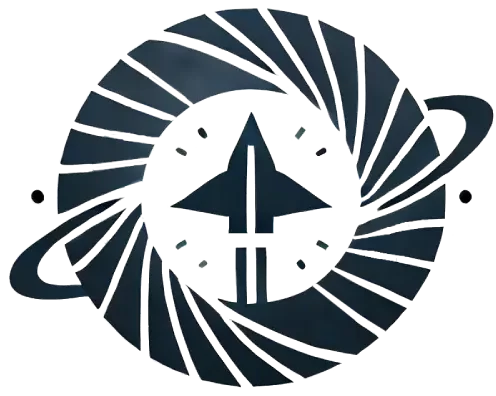Introduction to corrugated cardboard production line
The world of manufacturing is rapidly evolving, and one product stands out for its versatility and efficiency: corrugated cardboard. As businesses seek innovative solutions to meet growing demands, investing in a corrugated cardboard production line has become increasingly appealing. This technology not only streamlines the packaging process but also enhances sustainability practices. With e-commerce booming and consumer preferences shifting toward eco-friendly options, now is the perfect time to explore the benefits of this dynamic production solution. Let’s dive into why a corrugated cardboard production line could be your next smart investment in mass manufacturing.
Benefits of using a corrugated cardboard production line for mass manufacturing
A corrugated cardboard production line streamlines the manufacturing process. This efficiency leads to faster output rates, allowing businesses to meet high demands effortlessly.
Customization is another key benefit. Manufacturers can create unique designs tailored to specific client needs. This flexibility enhances brand identity and customer satisfaction.
Moreover, automation in these production lines minimizes human error. Consistency in quality becomes a hallmark of your packaging solutions.
Using advanced technology also reduces labor costs over time. Fewer workers are needed for manual processes, freeing up resources for other critical tasks within the company.
The lightweight nature of corrugated cardboard means lower shipping costs too. Companies save money Corrugated Cardboard Production Line for Manufacturing while optimizing logistics and delivery times.
These benefits collectively position manufacturers to respond rapidly to market changes while maintaining high standards of product integrity.
Cost-effectiveness and efficiency of corrugated cardboard production line
Investing in a corrugated cardboard production line can significantly enhance operational efficiency. These systems are designed for high-speed production, allowing manufacturers to produce large volumes quickly.
By automating key processes, companies reduce labor costs while minimizing human error. This results in consistent quality and reduced waste during manufacturing.
Additionally, the materials used in these lines are often sourced at lower prices due to bulk purchasing. This translates into lowered material costs per unit.
Energy consumption is another crucial factor; modern corrugated cardboard production lines utilize advanced technology that optimizes energy use. As a result, businesses see reduced utility bills over time.
In such a competitive market landscape, cost-effectiveness plays an essential role in maintaining profitability without compromising product quality or service speed.
Environmental sustainability of using corrugated cardboard

Corrugated cardboard is a champion of environmental sustainability. Made from renewable resources, it significantly reduces the reliance on plastics.
The production process involves less energy compared to other packaging materials. This contributes to lower carbon emissions and a smaller ecological footprint.
Once used, corrugated cardboard can be easily recycled or repurposed. Many recycling facilities accept it, ensuring that it doesn’t end up in landfills where it would take years to decompose.
Moreover, using corrugated cardboard supports sustainable forestry practices. Most manufacturers source their materials from responsibly managed forests that prioritize replanting and conservation efforts.
For businesses aiming to enhance their green credentials, switching to corrugated cardboard demonstrates a commitment to eco-friendly practices while meeting consumer demand for sustainable options. It’s not just about packaging; it’s about being part of a larger solution for our planet’s health.
Market demand for corrugated cardboard packaging
The market demand for corrugated cardboard packaging has surged in recent years. This trend is driven by several factors, including the rise of e-commerce and growing consumer preferences for sustainable products.
Businesses are increasingly seeking reliable ways to ship goods safely. Corrugated cardboard offers a lightweight yet sturdy solution that can withstand the rigors of transport. Its versatility allows it to be tailored for various products, making it an ideal choice across multiple industries.
Moreover, consumers technology now prioritize eco-friendly packaging options. As awareness about environmental issues rises, brands that use recyclable materials gain a competitive edge.
This shift toward sustainability has prompted many companies to revamp their packaging strategies. Investing in a corrugated cardboard production line not only meets current market demands but positions businesses favorably for future growth opportunities as well.
Investment considerations and potential returns
Investing in a corrugated cardboard production line requires careful analysis. First, assess the initial setup costs, which can vary based on technology and capacity. This upfront investment is crucial for long-term gains.
Consider operational expenses next. Efficient machinery often translates to lower labor and material costs over time. Evaluate how automation can reduce human error and enhance productivity.
Market trends also play a pivotal role. As online shopping surges, demand for packaging solutions increases dramatically. A reliable supply of corrugated products positions businesses favorably within this expanding market.
Don’t overlook potential returns either. With proper marketing strategies, companies can tap into diverse industries requiring sustainable packaging options.
Think about scalability. A well-planned production line allows manufacturers to adjust output quickly in response to market shifts, ensuring they remain competitive while maximizing profitability.
Conclusion: The future of mass manufacturing with corrugated cardboard production lines
The evolving landscape of mass manufacturing is increasingly leaning towards sustainable and efficient solutions. The adoption of a corrugated cardboard production line plays a vital role in this transition. As businesses strive to meet both consumer demands and environmental responsibilities, the advantages of these production lines become clear.
With benefits such as cost-effectiveness, efficiency, and sustainability, investing in a corrugated cardboard production line positions companies at the forefront of their industries. The rising market demand for eco-friendly packaging further supports this shift toward greener practices.
As technology continues to advance, these production lines are likely to evolve as well, offering even more innovative features that streamline operations and enhance product quality. Companies looking forward will find that embracing such advancements not only meets current trends but also prepares them for future challenges.
Those who invest now may secure significant returns while contributing positively to the environment—a win-win scenario that’s hard to overlook. Embracing corrugated cardboard production lines could very well define the next chapter in mass manufacturing’s journey toward more responsible practices.





